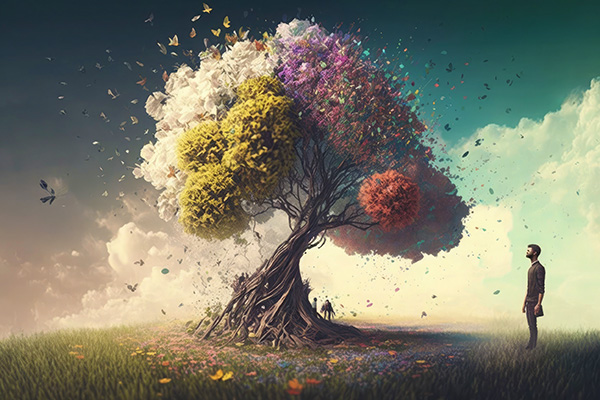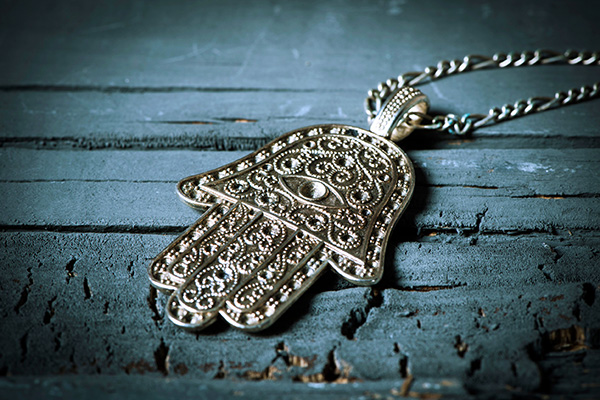divine love
A Step-By-Step Guide To Shielding Your Energy
 It is important to be aware of the invisible metaphysical forces that surround us, for not all of them are for our highest good. The energy deficiencies and dysfunctions of others, while often subtle, can have a profoundly harmful effect on our personal and spiritual well-being.
It is important to be aware of the invisible metaphysical forces that surround us, for not all of them are for our highest good. The energy deficiencies and dysfunctions of others, while often subtle, can have a profoundly harmful effect on our personal and spiritual well-being.
We all have to deal with people in our lives who can be particularly draining and unsettling – commonly known as ‘energy thieves’ or ‘psychic vampires’. Like psychic parasites, these people knowingly or unknowingly drain the energetic vitality of others, leaving their victims feeling drained, anxious, depressed, or even physically ill.
For those of us who are particularly sensitive to the energies of others, this can directly affect our physical, mental, emotional, and spiritual health in profound ways.
Energy shielding is therefore an essential spiritual practice for maintaining balance and protecting oneself from such negative influences. This type of energy work is essential for creating a protective auric barrier that ensures that the negative energies of others do not infiltrate your mind, body, or spirit. With the right attitude and some spiritual support, we are never defenseless against the negativity of others.
Energy theft, or vampirism, is not just a matter of superstition; it is something I have observed consistently throughout my life, both personally and professionally. In my own psychic practice, I rely on a robust energetic self-defense routine to ensure that any negative energy directed at me is deflected and rendered harmless.
The Spiritual Heart Of Watermelon Tourmaline
 Watermelon tourmaline holds a special place in my spiritual practice, and in my heart! Not only is this captivating stone a feast for the eyes, it is also a powerful tool for personal and spiritual growth, especially in opening and healing the heart chakra.
Watermelon tourmaline holds a special place in my spiritual practice, and in my heart! Not only is this captivating stone a feast for the eyes, it is also a powerful tool for personal and spiritual growth, especially in opening and healing the heart chakra.
As a psychic practitioner, I have witnessed the transformative power of this gemstone in opening the spiritual heart. From a psychic perspective, its energy is a bridge to the heart center, helping us to connect more deeply with ourselves and others.
Watermelon tourmaline is a unique and visually striking variety of tourmaline that features a color gradient resembling the interior and exterior of a watermelon. This gemstone typically displays a vibrant pink or red center, surrounded by a green outer layer, mimicking the look of a watermelon slice. This distinctive coloration is due to the natural zoning of different trace elements within the crystal as it forms.
Its unique coloring symbolizes the harmonious blend of heart chakra energies, with the green representing the nurturing and healing qualities of the heart chakra and the pink embodying love, compassion and emotional warmth.
The heart chakra, or anahata, is the fourth primary chakra, located in the center of the chest. It is the bridge between the lower and upper chakras, connecting our physical existence with our higher spiritual aspirations. When balanced, the heart chakra emanates unconditional love, empathy and emotional balance. However, energy blockages in this chakra can lead to feelings of jealousy, resentment and emotional instability.
The Divine Timing Of A Soulmate Connection
 A dear client I have been reading for many years called me the other day to finally confirm what I always knew was going to happen. As much as I was not shocked or even surprised, this event “blew her mind,” as she bluntly put it.
A dear client I have been reading for many years called me the other day to finally confirm what I always knew was going to happen. As much as I was not shocked or even surprised, this event “blew her mind,” as she bluntly put it.
You see, for years she had sworn up and down that she would “never, ever, ever in a million years” hear from her soulmate again, but now she has!
From my perspective, it was always just a matter of time. For years I told her not to lose faith and to hold on to the mystical love they shared because one day he would come back to her. But she kept shrugging and rolling her eyes and muttering things like “in my dreams” and “when pigs fly.” She just couldn’t accept the fact that he would one day be coming back into her life.
I must confess that while I was not surprised by this long-anticipated outcome, I was a bit intrigued by it for the simple reason that I thought for sure that her constant negative thoughts and feelings about the situation would eventually create so much energetic resistance that it would prevent her from reconnecting with him at all! But not even her constant self-sabotage and negativity could stop the turning of the wheels of destiny and divine timing. If we are meant to connect with someone who is our soulmate, it’s bound to happen one way or another, whether we trust the process or not.
The Old Souls Of The New Children
 Since the 1960s, the “New Children” have been arriving on the Earth plane in increasing numbers, bringing with them wisdom, insights, perspectives and innovations that are sorely needed in our rapidly evolving, and currently very troubled world.
Since the 1960s, the “New Children” have been arriving on the Earth plane in increasing numbers, bringing with them wisdom, insights, perspectives and innovations that are sorely needed in our rapidly evolving, and currently very troubled world.
The New Children are old souls reincarnated to return to the earthly realm on a special mission — to guide, heal, teach and enlighten; to awaken humanity to a higher level of consciousness.
As more and more of these ancient souls grace our planet with their presence, it is becoming increasingly apparent that they possess a profound understanding of the interconnectedness of all life and the inherent unity that binds us together.
Through their innate wisdom and pure-heartedness, the New Children are converging to transform the collective consciousness of humanity. They are introducing us to a future society where prejudice, discrimination and injustice are relics of the past, replaced by a deep reverence for the inherent dignity and worth of every soul.
The wisdom that this new generation of humans carry is not bound by the limitations of social constructs and dogmatic religion. They challenge us to look beyond the superficial labels of body, gender, race, creed, and nationality, reminding us that these are merely temporary identities that obscure the true essence of who we are. They have a deep understanding that we are all equal and deserving of love, regardless of outward differences.
A Christian Mystic’s Guide To Dealing With Pain
 Our search for the meaning of pain, hardship, and suffering is a profound and enduring human endeavor.
Our search for the meaning of pain, hardship, and suffering is a profound and enduring human endeavor.
Throughout history, our spiritual beliefs and religious teachings have helped us understand and find meaning in life’s challenges and painful experiences.
These interpretations provide comfort, guidance, and a sense of peace in the face of adversity as we learn that suffering has a purpose or can lead to spiritual growth, enlightenment, or a deeper connection with the divine.
Our spiritual quest to better understand pain is driven by a deep desire to make sense of life’s challenges and to discover how these difficult experiences fit into the larger tapestry of our existence.
Religions and spiritual wisdom traditions around the world offer different perspectives on pain and suffering, each with its own explanation for why these experiences occur and how they should be approached or understood.
These diverse perspectives all share certain common threads: that the origins of pain and suffering lie in the concept of duality; that there is meaning to be found in suffering; and that through faith, reflection, and spiritual practice we can transcend the pain caused by duality and connect with something greater than ourselves.
The Mystical Symbolism Of The Hamsa
 The well-known Hamsa symbol has a rich tapestry of esoteric meaning that spans several cultures and religious traditions, including Islam, Judaism, and Christianity. It is commonly used as a protective amulet, offering protection from the evil eye, as well as a talisman or good luck charm, bringing its wearer blessings in the form of happiness, health, and fortune.
The well-known Hamsa symbol has a rich tapestry of esoteric meaning that spans several cultures and religious traditions, including Islam, Judaism, and Christianity. It is commonly used as a protective amulet, offering protection from the evil eye, as well as a talisman or good luck charm, bringing its wearer blessings in the form of happiness, health, and fortune.
The Hamsa is also known as the Khamsa, Hamesh, the Hand of Fatima, the Hand of Miriam, or the Hand of Mary. The names “Hamsa” and “Khamsa” both refer to the number five in Arabic while “Hamesh” means five in Hewbrew, all symbolizing the five fingers of the hand.
In Islamic tradition, this famous esoteric hand is named after Fatima al-Zahra, the youngest daughter of the Prophet Muhammad and his first wife Khadija. Fatima is known by many titles in Islamic tradition, of which al-Zahra (meaning “the Radiant One”) is one of the most prominent. Her life, devotion to family and faith, and moral integrity are admired and serve as an inspiration to Muslims around the world.
In Jewish culture, the hand symbol is named after Miriam, the sister of Moses and Aaron, who was a prophetess and is an important figure in Judaism. In some Christian contexts, it is also known as the Hand of Mary, although it is less commonly referred to by this name. In this instance it is associated with Mary, the mother of Jesus, who is revered for her purity, grace, and maternal protection.
